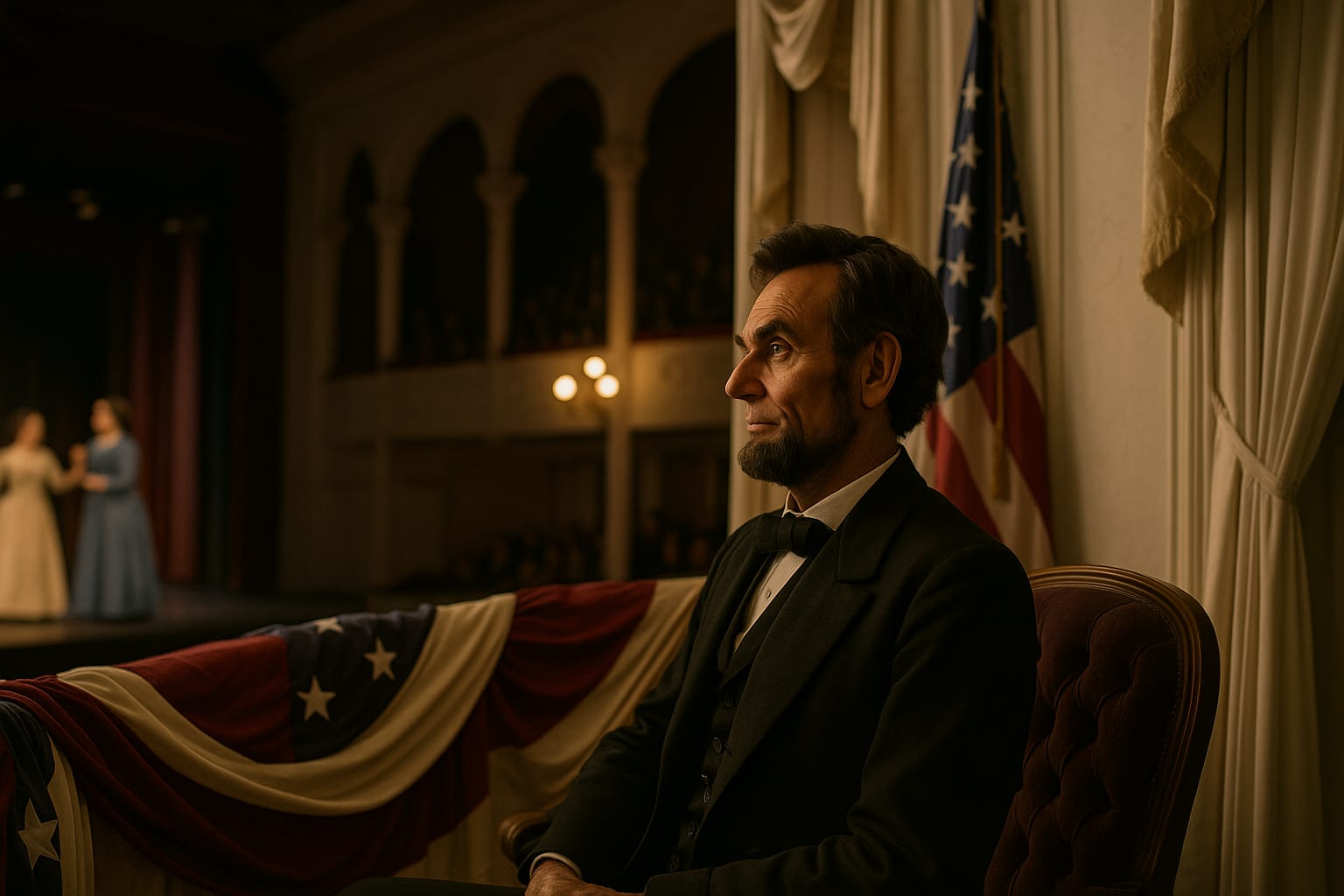America's Most Tragic Theatre
Ford's Theatre stands frozen in America's collective memory at 10:13 PM on April 14, 1865 - the moment John Wilkes Booth's derringer changed history. But the theatre isn't just a monument to that tragic night; it's an active paranormal site where the assassination plays out repeatedly in spectral form. The trauma of Lincoln's murder was so profound that it tore a permanent hole in the fabric of reality. The president's spirit, Booth's ghost, and the phantoms of that night's audience remain trapped in an eternal loop, forever reliving America's darkest theatrical performance. Ford's Theatre isn't just haunted - it's possessed by history itself.
A Night That Never Ends
The Fatal Performance
Lincoln attended 'Our American Cousin' seeking respite from the Civil War's end. Booth, knowing the play's biggest laugh line, timed his shot perfectly. The president was shot in the back of the head, the bullet lodging behind his right eye. The psychic trauma of a president's public murder in a crowded theatre created supernatural reverberations that continue today.
The Cursed Theatre
After Lincoln's death, Ford's Theatre was considered cursed. The government banned performances and converted it to offices. In 1893, the building collapsed, killing 22 clerks - the same number as Lincoln's box number multiplied by the date of his death. Many believe this was Lincoln's spirit expressing anger at the desecration of his death site.
The Restoration
When Ford's Theatre was restored in 1968, workers reported tools moving, unexplained accidents, and seeing a tall figure in a top hat watching from Box 7. The restoration seemed to reawaken dormant spirits, and paranormal activity has increased every year since.
The Eternal Audience
Abraham Lincoln
Lincoln's spirit manifests in Box 7 (the Presidential Box), appearing as a tall, sorrowful figure. Witnesses report seeing him slumped forward, then suddenly jerking as if shot. His ghost has been photographed numerous times, always in period dress, sometimes accompanied by the scent of lilac cologne he wore that night. Some claim to hear him laugh at the play's jokes, unaware of his impending doom.
John Wilkes Booth
Booth's ghost runs the same escape route nightly - through Box 7's door, leaping to the stage, shouting 'Sic semper tyrannis!' before limping off stage left. His spirit seems trapped in his moment of infamy, forever performing his final act. Stage crew report hearing his footsteps and his cry even when the theatre is empty.
Mary Todd Lincoln
Though Mary survived, her traumatized spirit returns to Box 7, screaming warnings that never reach her husband in time. Her phantom shrieks of 'They've killed him!' echo through the theatre. Some psychics claim she's trying to change the past, warning Lincoln across time.
The Audience
The 1,700 people who witnessed the assassination left a collective psychic imprint. Visitors report seeing a full phantom audience in period dress, frozen in shock, some standing, some fleeing, all transparent. The traumatized crowd seems unaware of modern visitors, eternally experiencing America's darkest moment.
Documented Phenomena
The Time Loop
Every night at 10:13 PM, Box 7 experiences a temporal replay. The temperature drops 20 degrees, a gunshot echoes (though no gun is fired), and witnesses smell gunpowder. Some visitors report briefly seeing the theatre as it was in 1865 - gas lights, period decorations, and a full audience watching a play that ended 160 years ago.
The Lincoln Manifestations
Lincoln's ghost appears not just in the theatre but walking the route to the Petersen House where he died. This spectral procession occurs on the 14th of every month, with Lincoln's transparent form carried by invisible bearers, blood dripping from wounds that no longer exist.
The Curse Continues
Actors performing in Box 7 report forgetting lines, props breaking, and feeling an oppressive sadness. Some refuse to perform there after experiencing invisible hands on their shoulders or hearing whispered warnings. The box seems to resist any joy, as if happiness is forbidden where Lincoln died.
Witnessing History's Ghost
Ford's Theatre operates as both a working theatre and museum, carefully balancing entertainment with reverence for its tragic history. Tours include Box 7, though many visitors report feeling physically ill or overwhelmingly sad when entering. The museum below displays artifacts including the derringer and Lincoln's blood-stained pillow, each radiating paranormal energy. Evening performances see the most ghost activity, particularly plays about the Civil War era. Actors report that Lincoln's ghost sometimes appears in Box 7 during performances, watching with sad appreciation. Some claim he applauds at the end, his ghostly clapping audible but producing no sound. Staff members have protocols for paranormal activity, including never leaving Box 7 completely dark (Lincoln's spirit becomes agitated in darkness) and maintaining flowers in the box (Mary Todd's ghost is calmed by fresh flowers). They've learned to coexist with their ghostly residents, treating them as permanent members of the theatre company. Whether you're a history buff or ghost hunter, Ford's Theatre offers an encounter with America's most significant paranormal presence. Just remember - you're not just watching history; you're witnessing an assassination that never stops happening, a president who never stops dying, and a nation's trauma that never stops echoing through time.

